The EPISTÉMÊ cuvée is a special cuvée made each year by a student of the School of Wine & Spirits Business together with our partner Armand Heitz, a committed Burgundian winemaker.
Our student is involved in all steps of the process, from the choice of grape variety to the launch of your wine, including harvesting, cellar work and bottling.
An exciting and enriching experience that we invite you to discover, step by step.
The Pre-Tasting of Épistémê
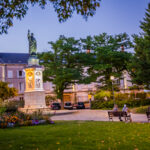
2022 has started on a high note thanks to the first pre-tasting of Épistémê!
Winter and cold weather slow down the evolution of the wine. Epistémê waits in oak barrels to find balance but the low temperatures have delayed the malolactic fermentation process. The wine still contains malic acids, which should soon turn into lactic acids.
In other words, the wine is still too acidic!
The term MLF (maloactic fermentation) is used to describe the process. More simply, it transforms the acids into a softer, smoother, rounder texture, adds volume to the wine, and slightly diminishes the varietal aromas. This is a very common practice with Chardonnay in Burgundy.
After the Christmas holidays, Armand and I thought it would be nice to organise a tasting of the wines from the domain to present them to the SWSB students.
We also wanted to bring back a sample of the Épistémê cuvée!
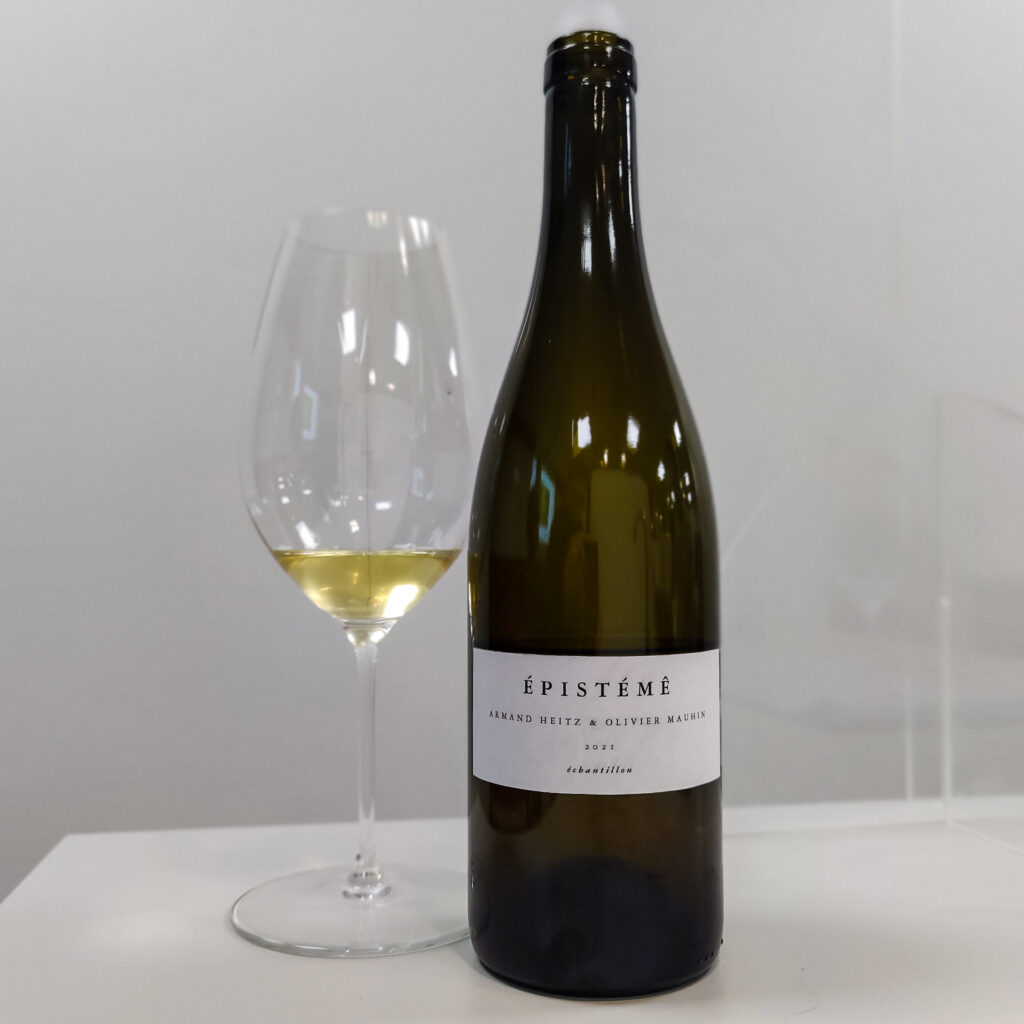
This event was an opportunity to speak about modern farming methods that are sometimes at odds with the need to respect for the environment.
Armand shared his philosophy, and the exchange with the students was extremely interesting.
Indeed, they are from a generation which is sensitive to the planet and are therefore on the same wavelength in terms of environmental concerns.
We first tasted red wines: Bourgogne Pinot Noir from Pommard Village, Pommard 1er Cru Clos des Poutures – Monopole.
And then white wines: Bourgogne Chardonnay from Saint Romain Combe Bazin, Meursault, Chassagne-Montrachet 1er Cru Morgeot.
Everyone gave their impressions of the wines. It was interesting to consider the different tastes in terms of the group’s cultural mix, especially with the suggested food and wine pairings.
Finally, we tasted the first sample of Épistémê, which was a blend of one of the barrels of 50%-50% Sauvignon and Aligoté.
It was an emotional moment, both joyful and apprehensive. It was the first cuvée tasting for Armand, the public, and for me as well!
Moreover, seeing your name on a wine label is truly a great feeling!
All in all, it went well. I was apprehensive because the wine is still consolidating in barrels, has not yet found its perfect balance, and can be slightly fizzy. The Sauvignon has retained its varietal properties with aromas of green bell pepper, asparagus, and fresh fern, while the Aligoté gives more floral aromas of white flowers, butter, and a slightly toasty tone!
On the palate, it starts slightly fizzy, but this will fade before bottling, the juice is fresh, with no heaviness. It has a nice volume with a liveliness that is specific to the blend’s acidity. The finish has the suppleness of a fine wood and evolves elegantly!
In any case, this tasting and the reactions of the tasters have reassured me. I can’t wait to see the evolution of the wine.
The bottling is planned for the end of March!
Sauvignon
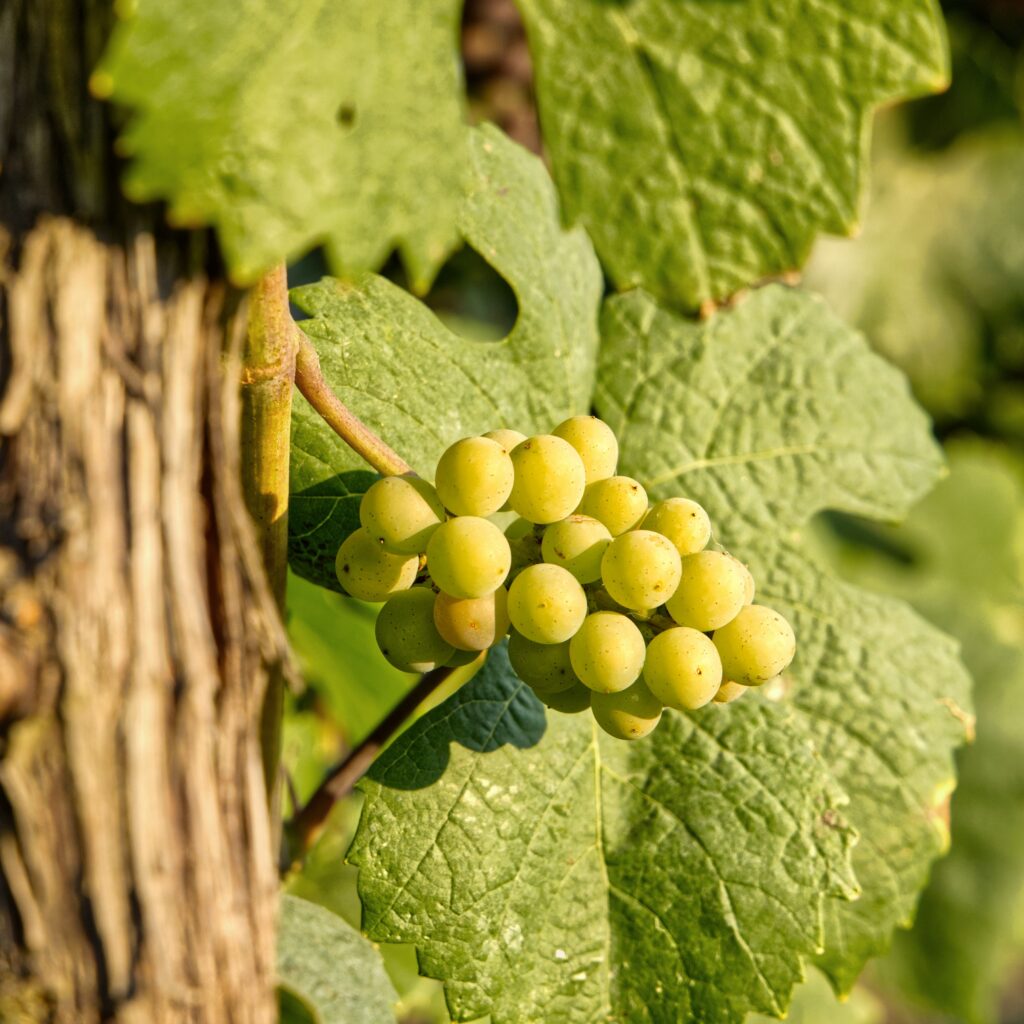
Last time I announced one of the most important steps of this vintage:
our choice of grape variety, Sauvignon Blanc!
When Armand proposed to me to work on this atypical grape variety in the region, I was immediately excited.
Armand actually planted Sauvignon a few years ago on the Corpeau plot I mentioned. You may wonder why? His answer is simple:
“For fun! It’s with experiences that we forge knowledge! “
Overall, here is where you would expect to find wines made from Sauvignon in the world:
- In France – in the Loire Valley: Sancerre, Pouilly-Fumée, Menetou-Salon
- In New Zealand in Malborough
- In Australia at Adelaide Hills
- In the USA, in Napa Valley where it is sometimes called “Fumé Blanc”.
- In Chile at Casablanca and San Antonio
- In South Africa at Constantia and Elgin
But Sauvignon Blanc is a grape variety that adapts to many climates around the world. Generally, to cool or temperate climates. So why not adapt it to the climate of the wonderful Côte de Beaune?
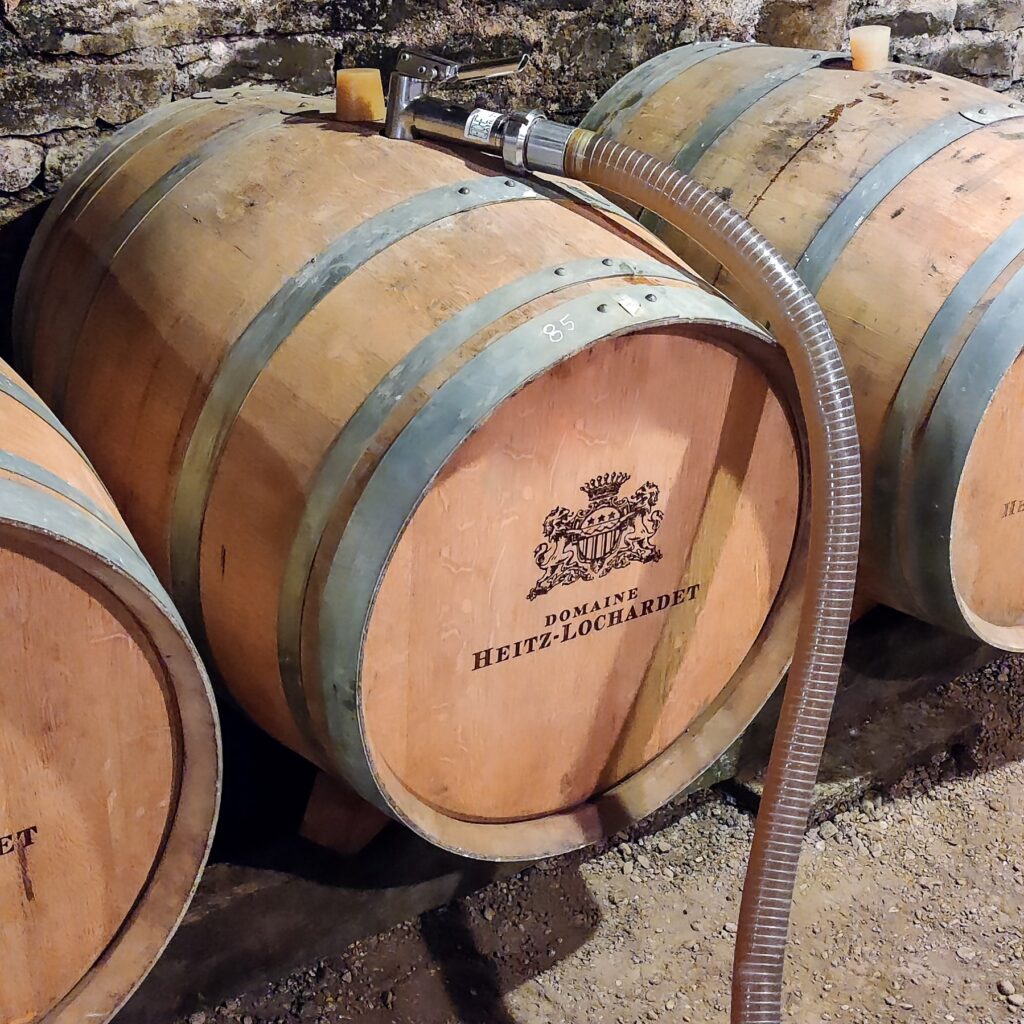
Sauvignon is a grape variety with powerful and refreshing aromas that are rather vegetal (asparagus, green bell pepper, grass) but there are also fruity aromas (gooseberry, honeydew, grapefruit, white peach, passion fruit).
To produce a well-balanced wine, we have chosen to age it in oak barrels.
However we will avoid too many lees stirring, which is an action that consists of stirring the grape juice in the oak barrel, to bring richness, fatty and buttery aromas.
At this point, we are in a waiting phase: the maturation of the wine.
Basically, after the grapes have waited for us to take care of them, we are the ones waiting for them to take care of us!
During this maturation process, we wait for our wine to show its potential and reveal its characteristics. If necessary, we will give it a boost.
Based on what the wine expresses and how we appreciate it, we envisage the possibility of adding some Aligoté. In small quantities of course, and gradually, to take time to mature our decision.
It’s just an idea, but as Armand says, the best option to find an answer is to try!
STEP #2
Race to grapes!
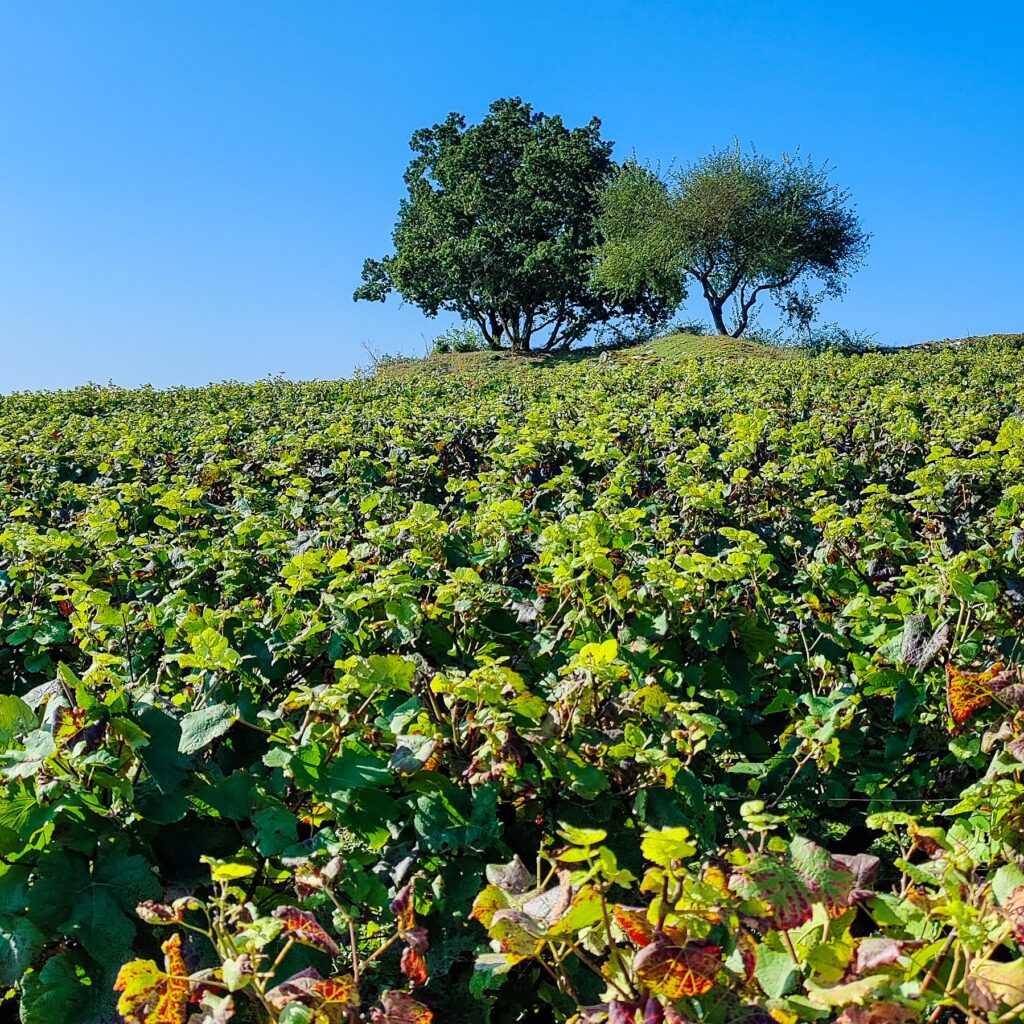
September 17, 8am.
First day of the harvest.
The whole team is ready! So are the machines.
The weather is so bad that the grape-cutters get washed away by the rain in the vineyard. I am happy to be down in the winery, as I have already experimented with the secateurs several years ago.
This year is special. As I explained earlier (STEP #0), the weather was bad for the vines and the grapes suffered from mildew, powdery mildew and sometimes even botrytis. I don’t know if we can talk about climate change, but 2021 was quite something!
As a matter of fact, the work in the vineyard is complicated for the grape-cutters, not only there are less grapes, but the few grapes to be picked were of much lower quality.
Not easy for the teams to stay motivated!
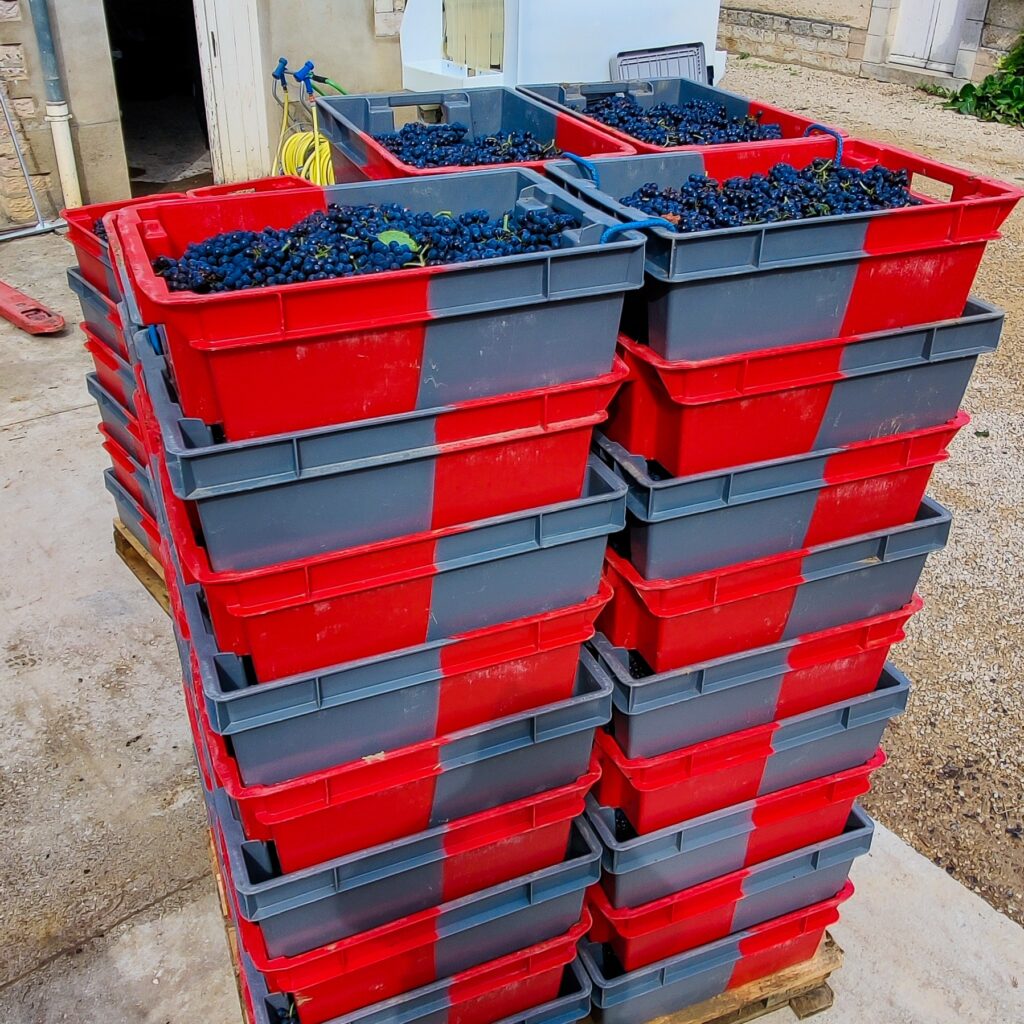
What happens once the grapes are harvested?
We receive Pinot Noir grapes in the big grey and red boxes that Marie mentioned last year. Then they are spread out on the sorting table, and we manually remove the grapes which quality is not good enough or that show signs of disease.
Then we choose whether or not to destem the grapes (separate the berries from the stalk, the stem that carries the grapes) depending on the quality of the berries, the maturity of the stalks and the wine we are considering.
After that, we send the grapes to stainless steel vats and let them macerate. The aim is for the grapes to infuse together to develop their aromas. In a few days, we will let the temperature rise so that the alcoholic fermentation can begin: thanks to the action of the yeasts, the sugars present in the grapes will be transformed into alcohol.
Fermentation is one of the keys to the wine making process.
Throughout this period, there are many actions to be carried out, among them punching down and pumping over. These allow the extraction of colour, the structuring of the wine, but also the supply of oxygen and thus the stimulation of fermentation.
I use the opportunity of my immersion to learn these basic yet crucial winemaking techniques.
For white wines, it is even simpler, the grapes are sent in a press, where only the juice is recovered, then they are transferred to the tanks.
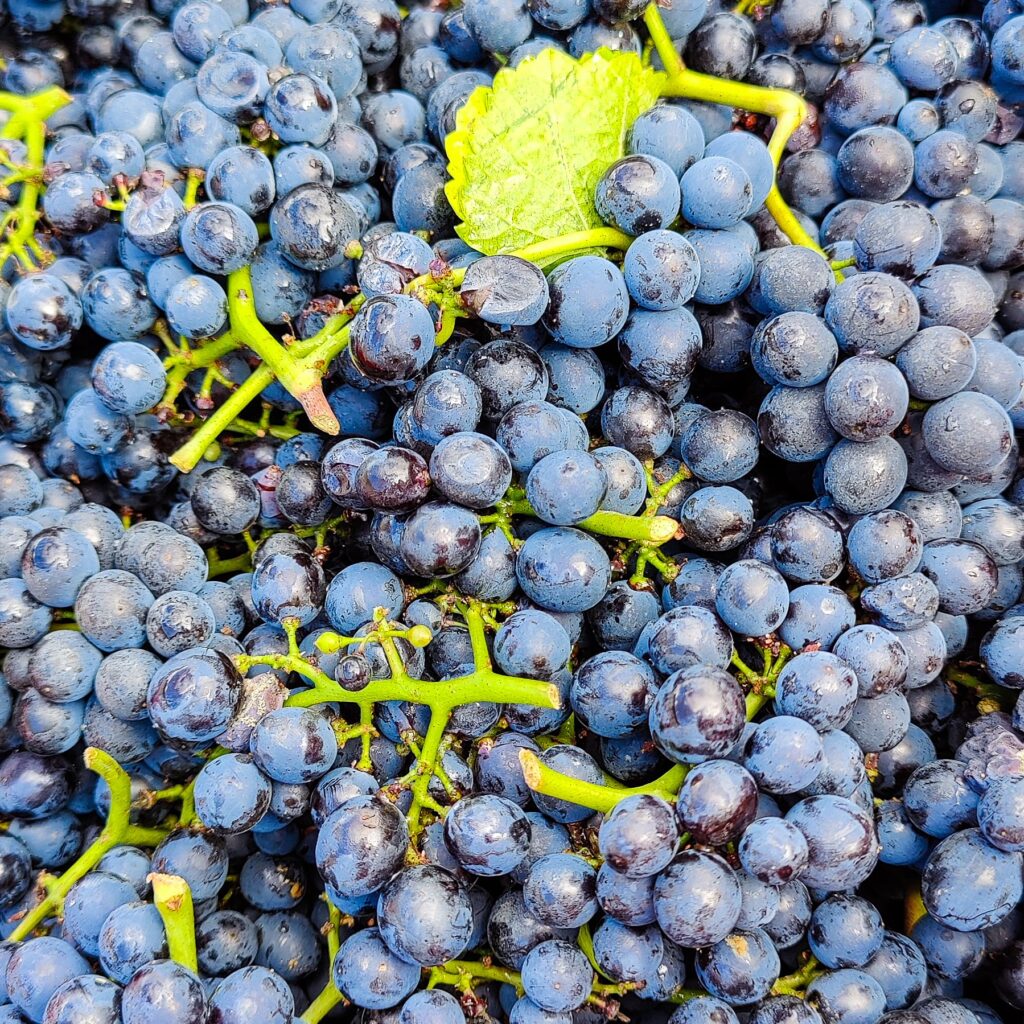
And what about my cuvée?
We quickly agreed with Armand to make the second vintage of Episteme a white wine, produced from grapes from a young Burgundy vineyard and we settled on a young vineyard.
It’s located in Corpeau, next to Chassagne-Montrachet and Puligny-Montrachet, and it’s a Sauvignon plot!
Sauvignon in Burgundy? well yes, you read that right 🙂
It is true that when it comes to white wines, Burgundy is the land of Chardonnay. And Sauvignon is generally grown in the Loire Valley and in the Bordeaux vineyards. But there are also a few Sauvignon vines in Burgundy, more particularly in Saint-Bris, in the Auxerrois vineyard.
The vineyard we chose is therefore kind of unique
Armand has been working this plot for 4-5 years, testing the most nature-friendly techniques. It has the particularity of being grassed with a plant cover which allows to favour the organic matter and the biological life of the soil! In addition, it is covered with hemp. Did you know that hemp is a good alternative to grass and prevents weeds!?
I’ll tell you about the winemaking methods we have chosen in the next article, but here’s a hint: we may be blending with the Sauvignon and … ?
STEP #1
Welcome to Chassagne
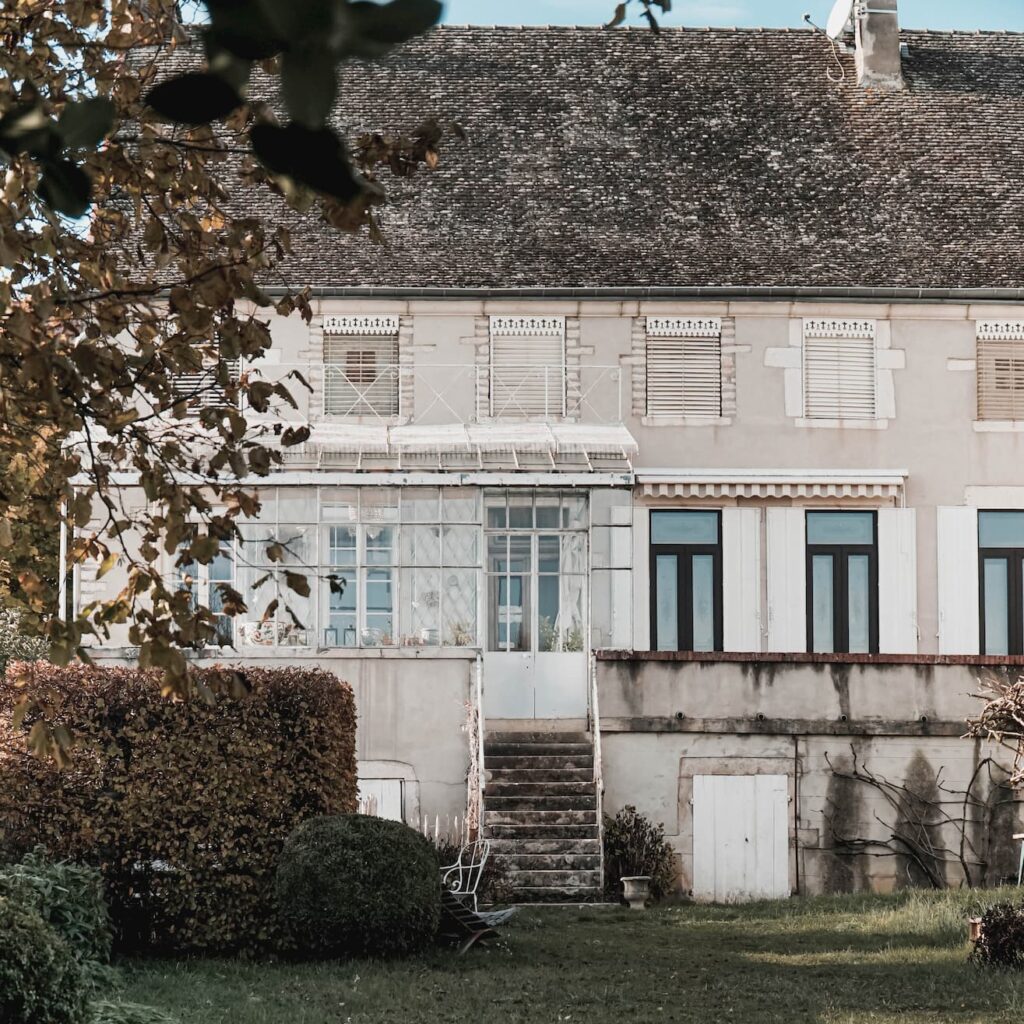
September 13, 7am.
The church of Chassagne-Montrachet rings the bells, sky is a rosy-blue painting, and the day is getting brighter.
I cross the entrance to the domain. It simply looks like the courtyard of a large farmhouse: no fountain, no lawn, no parking lot, and no golden fence as some might imagine.
I am greeted by François, the cellar master. It’s early but he is already giving it his all at work! He immediately introduces me to the team, they’re young and friendly.
So many names to remember in a row!
I can already work on the vintage since the courses only start in a couple of weeks at the school! It’s a great opportunity to understand the spirit of the Domaine before working remotely, only coming back for the key stages.
That doesn’t leave much time, though. The work is going to be intense and I am very excited to see the project start and to be part of the team!
We quickly get to work.
The harvest has not yet begun, but it is nevertheless time to prepare for the arrival of the grapes. We clean the tanks, pipes, pumps and all the winemaking equipment that encounters the wine by sanitising it with sulphur dioxide (SO2).
This may sound surprising, but it is one of the best ways to not only ensure that everything is clean but also to avoid bacteria and micro-organisms that can affect the stability of the wine.
Later, we wash the barrels, inside and outside, with a with a 360° cleaning nozzle, as well as a high-pressure water washer for the outside. Once clean and dry, we take them down to the cellar with a winch.
I even learn the art of lining up the oak barrels in the cellar with a spirit level, a work of patience and precision.
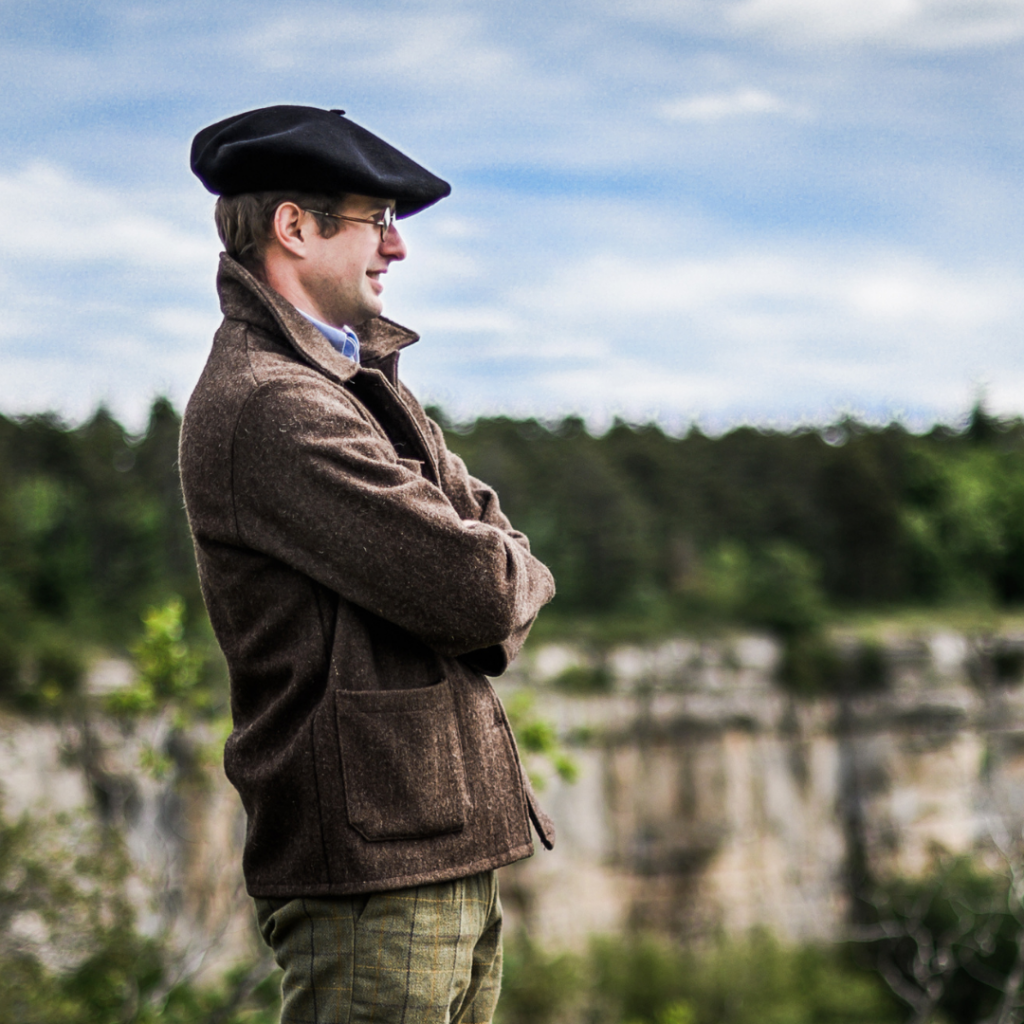
This is when a tall man wearing a beret, long shirt, short pants, high socks, dressed in a 50’s peasant style comes to greet me and gives me a good shake!
I finally meet Armand Heitz!
Indeed, we have known each other virtually via the social networks for a few years, but with the Covid-19 and the gap year, we had never met for real.
Armand is to the domain what a maestro is to his musicians. He oversees the teams working in the vineyard, the cellar, the permaculture garden of Loaris, the cattle breeding activity as well as a bed and breakfast project. In short, he has a lot on his plate. Yet, he’s there to help out and ensure that the job is done with precision.
We quickly discuss the plots of vineyards available for the cuvée and we agree on the grape variety(ies) that we are going to work with. We also think about the different types of ageing possible according to the equipment available in the winery.
Those are fundamental elements for the rest of the work on the cuvée!
We had a few blind wine tastings during the week to bond with Armand and the whole team. This is an essential step to be able to express one’s emotions and sensations, to get to know each other and to start thinking collectively about the vintage.
Do you want to know which grape variety(ies ? 😊 ) we’re working on? Stay tuned for the next post!
STEP #0
The Project
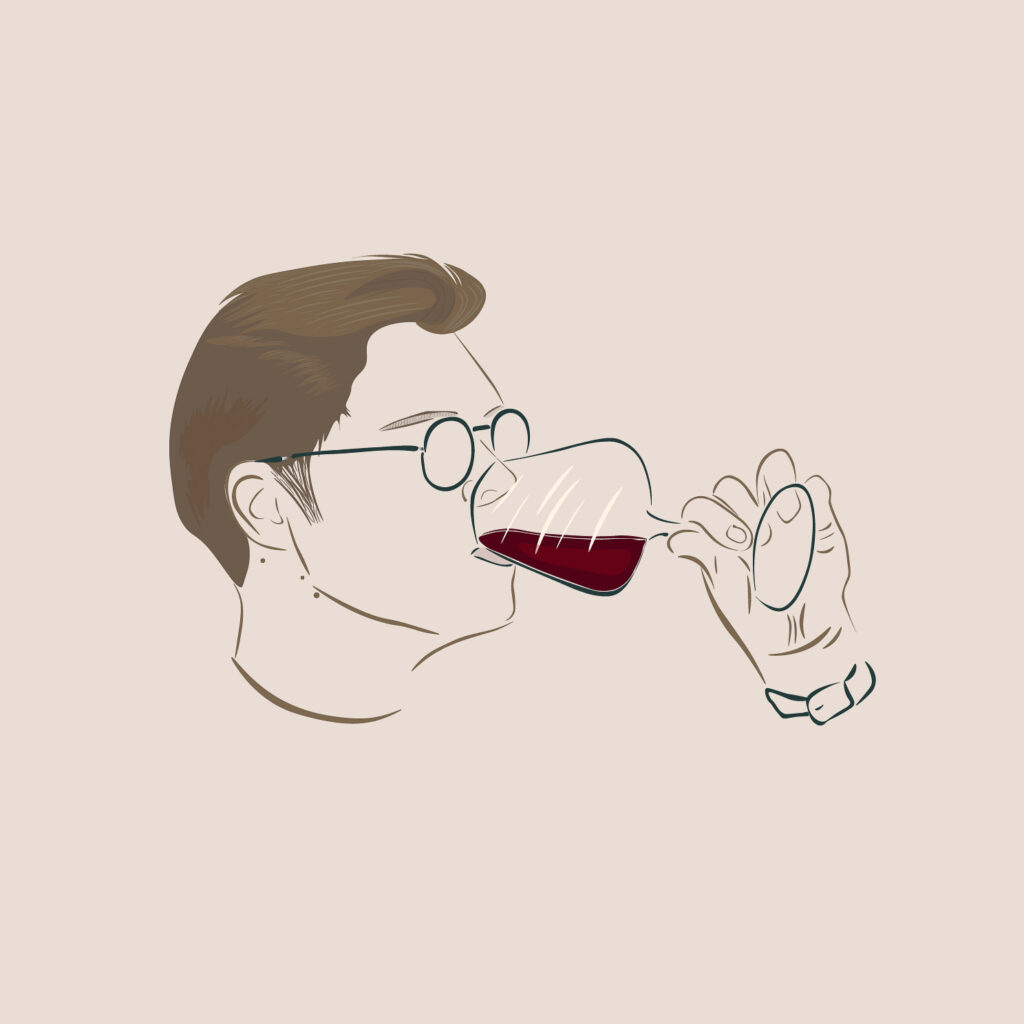
I am Olivier Mauhin,
I’m a true wine enthusiast since 2014 and I’ ve just joined the School of Wine and Spirits Business (SWSB).
The whole project is about transmission.
Armand is going to teach me the backstage work of a winemaker, and we will be doing the winemaking together. This is a golden opportunity for me! I already experienced working in the vineyards in 2018 and I loved it so I’m super excited to get back into it!
Now it’s my turn to go behind the scenes and get a taste of the winemaking process for the 2021 cuvée!
Let’s face it, 2021 is a special year for French agriculture.
The weather in Burgundy has been affected by late frosts, irregular rainfall, hail in the summer, thunderstorms and reduced sunshine compared to the average in previous years.
Is this a cause-and-effect link with climate change in relation to human over-consumption? I couldn’t say so!
What I can say, however, is that I will take advantage of this opportunity to raise awareness among amateurs, enthusiasts and the curious about the importance of adapting to different modes of consumption, whether they are food or not.
Permaculture, agroecology, biodynamics, are more ecological agricultural practices and Armand Heitz practices them all!
Would you like to find out how these farming methods promote the regeneration of the ecosystem?
I’ll try to provide you with answers throughout my adventure by sharing all the steps with you here.
Don’t miss anything by following the Domaine Armand Heitz Instagram page (@armandheitz), the school’s Instagram page (@bsb.winespirits) or my page dedicated to the world of wine (@frenchie.winelover)!
In the meantime, here are a few photos of Marie’s experience: